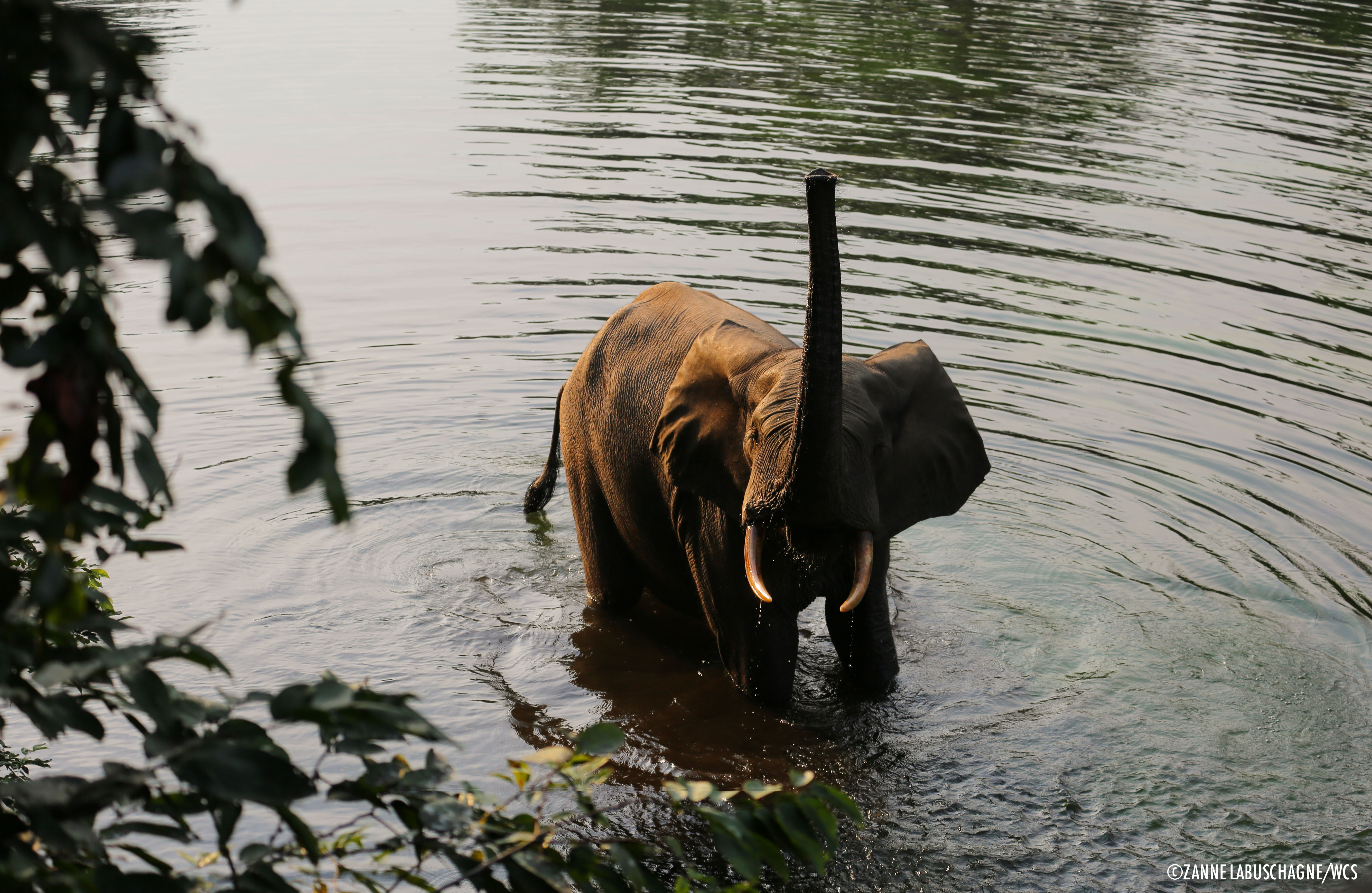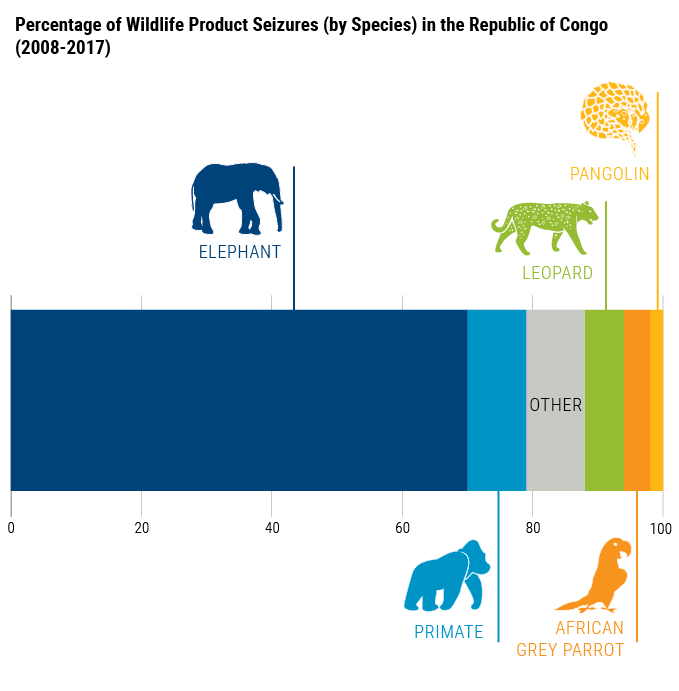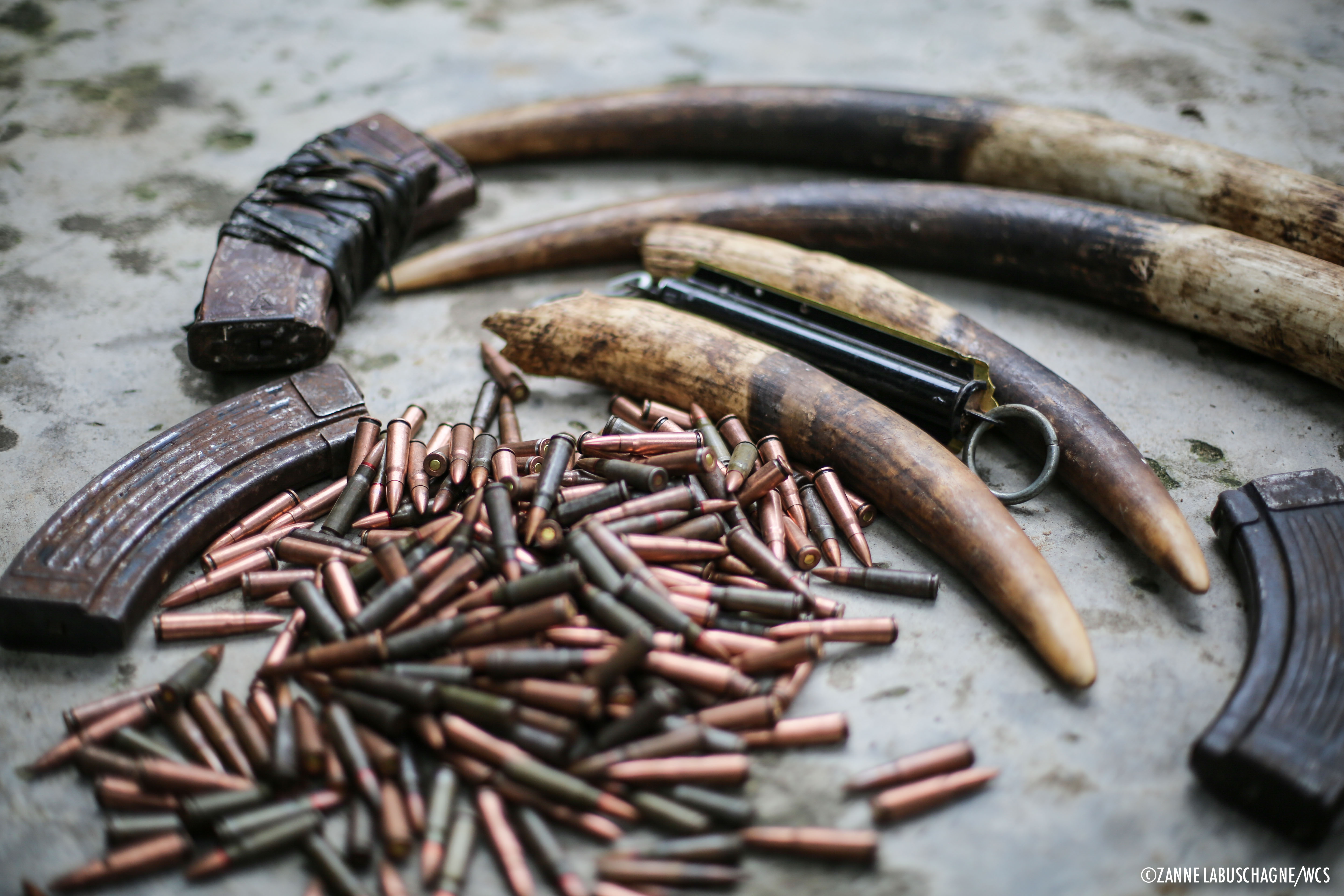
Congo Adopts Recommendations of First National Judicial Review of Wildlife Crime
Over the past decade central Africa’s forest elephants have been hit by an unprecedented wave of ivory poaching. Elephant populations have declined drastically in the region. The Republic of Congo, harbouring a quarter of Africa’s remaining forest elephants, has not escaped this poaching crisis. Poaching gangs have become more organised, often traveling from neighbouring countries to exploit Congo’s wildlife.
Now, ten years after the adoption of Congo’s existing Wildlife and Protected Area Law the first analysis of all wildlife crime cases brought before the country’s courts has been released. The study highlights key issues, identifies potential leverage points, and provides recommendations for the judicial system to improve handling of wildlife offenses and deter wildlife trafficking. It is a result of a year of field work completed across the country’s regional courts and conducted as part of a collaborative project between the Ministry of Forest Economy, the Ministry of Justice and Human Rights and the Wildlife Conservation Society (WCS), important work made possible by funding from the USAID Strengthening Central Africa Environmental Management and Support (SCAEMPS) Program.

On the 28thof July the report was formally presented to and validated by the Ministry of Justice and Ministry of Forest Economy at a workshop held in Brazzaville. The results of this study will be invaluable for local authorities to recommend institutional and legal reforms and for conservation organisations to assess progress and problem areas in their strategies to protect the Republic of Congo’s wildlife.
Between 2008 and 2017 seventy percent of all wildlife crime cases brought before Congo’s courts involved ivory trafficking or elephant poaching, confirming the harsh reality of the threats to the country’s elephants. However, the number of cases brought before the courts for wildlife crimes has also increased over time. This may seem like a negative result, but the fact that wildlife criminals are being tried and not acting with impunity is huge progress. This rise in cases being brought before the courts is in parallel with the increased involvement of NGOs in supporting the judicial system with regards to wildlife crime cases. More notable is the increase in maximum sentences for wildlife crime being delivered by the courts (5 years in prison and 5,000,000 FCFA fines), which have proliferated in the past few years – showing a shift in the severity with which wildlife crime is now regarded thanks to the efforts of the Congolese Government and NGO partners.

The study also highlights some important problem areas. Convictions for both national and international trafficking of wildlife products were few and far between, highlighting a crucial crack in the system to be tackled in coming years. Higher level players in trafficking networks, the links in the chain that if broken can have a far reaching impact in the fight against wildlife crime, are still evading justice. Repeat offenders are also rarely handed down the maximum sentence (as advised by the Law), as there exists no national database or archiving system with which to track who the recidivists are. Finally, even if maximum sentences are applied – relatively few of those sentences are served in full, due to the need of substantial reforms in the prison services.
The information that this study has collated, and the recommendations it puts forward, if enforced, will have huge impact in tackling wildlife crime in the Republic of Congo in the years to come.


Pingback: PROFESSIONALIZED ANTI-POACHING OPERATIONS LEAD TO ARREST AND CONVICTION OF FOUR ELEPHANT POACHERS IN CONGO – WCS Congo blog
Pingback: WCS Congo 2018 highlights – WCS Congo blog